Bloggers on religion and skepticism discuss the truth or accuracy of beliefs at great length. But I rarely see these bloggers trying to get behind “what a belief actually is”. “Belief” is taken to be a common sense notion — and yet, it is not. I have written here how beliefs serve functions very different from the apparent “truth” they are claiming. And here I listed the “Counter-Intuitive Belief Principles”.
The problem with such conversations is that since people have beliefs, they assume they must know exactly what “belief” is. Likewise, most people think they understand their own language, because, after all, they speak it. Such arrogance is pervasive — just because we do something, does not mean we understand it: voting, sex, taste in food and much more. So just because we sense our beliefs or sense our self, does not mean either of these things are as substantial as we imagine.
One of the ways of communicating beliefs, is the use of metaphors. And it is exactly the inaccuracy of metaphors that illustrates the function of beliefs versus the truth of beliefs.
Light: Contrary Useful Metaphors
Inaccurate metaphors abound in science: The wave theory for light is useful but also inaccurate. Another light metaphor is the particle theory of light but it also has many short-comings. The best metaphor we have for light at this time is mathematical model–however, it is a metaphor that most of us mere mortals can not understand.
Layering Your Metaphors
Simultaneously holding together the mundane, inaccurate light metaphors of wave and particles results in a synergistic and highly useful layered metaphor for the average mind. Mixing error-laden, simplistic metaphors (or heuristics), depending how we mix them, can be very useful. By layering unavoidably inaccurate metaphors, we can avoid the high cost of more precise and accurate theories (like mathematics). Mixed stories can get us a long way.
Over the last few years, I have used many different types of metaphors to try and explain some of the unintuitive functions of belief. For fun, I have put some of those visual metaphors together on the right. For me, when I discuss beliefs, though I am using one metaphor, in my head, these are all dancing around simultaneously — which can end up as an obstacle in conversation. For if I am not aware of my images, or my conversation partner has not exposure to my models, we may end up talking past each other. This happens in religious dialogue too. But even without knowing the metaphors, if we step back and try and observe the functions of someones beliefs, we may get a glimpse of how, though inaccurate, a metaphor may be still help in something the person is trying to approximate.
In my previous posts, to describe beliefs using many pictorial metaphors — each inadequate and problematic. But together, they are incredibly helpful to me at understanding others in ways that just one of these metaphors, by itself, would not be. This layering is a sort of nest or webbing: a living space for my beliefs about beliefs!
 I have also wrestled using analytic, systemic, and computational models of belief (see one example to the right). “Reductionism” is a good thing when used correctly, and I have embrace it occasionally comparing beliefs to circuitry or laying out flowsheets on how “you” changes. But few people enjoy these approaches. Yet these are also among the many models my mind drifts between when I discuss or think about beliefs.
I have also wrestled using analytic, systemic, and computational models of belief (see one example to the right). “Reductionism” is a good thing when used correctly, and I have embrace it occasionally comparing beliefs to circuitry or laying out flowsheets on how “you” changes. But few people enjoy these approaches. Yet these are also among the many models my mind drifts between when I discuss or think about beliefs.
Here are links to the posts discussing these metaphors:
- A modular system
- A Nest
- Constellations
- Webs
- A Balloon
- A Submarine
- A Ship
- Traffic Lights
- Many Selves
- Circuitry (analytic)
- Beliefs, what are they (analytic flow sheet)
- How “You” changes (analytic)
Final Caveat: Science tests the usefulness of metaphors, even imperfect metaphors with empirical tests. Heck, I think we all value tests of sorts — we all value evidence at some level. Testing is as old as the human species — science just works on ways of improving and checking tests. Without tests, one person’s model is as good as the next. We should strive to test our metaphors and be straightforward describing what counts as “success” or “more accurate”.
Question for readers: Do you have any visual metaphors you use to imagine people’s belief systems?






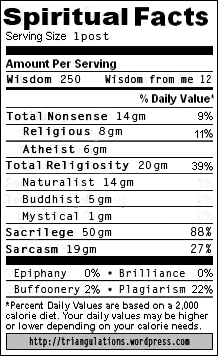



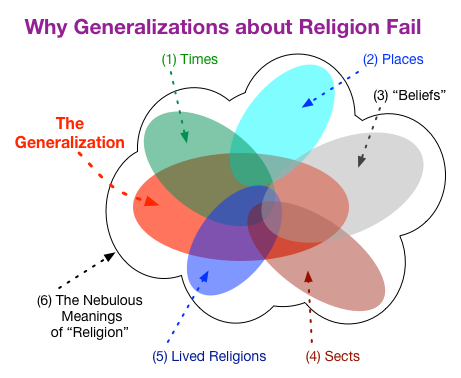


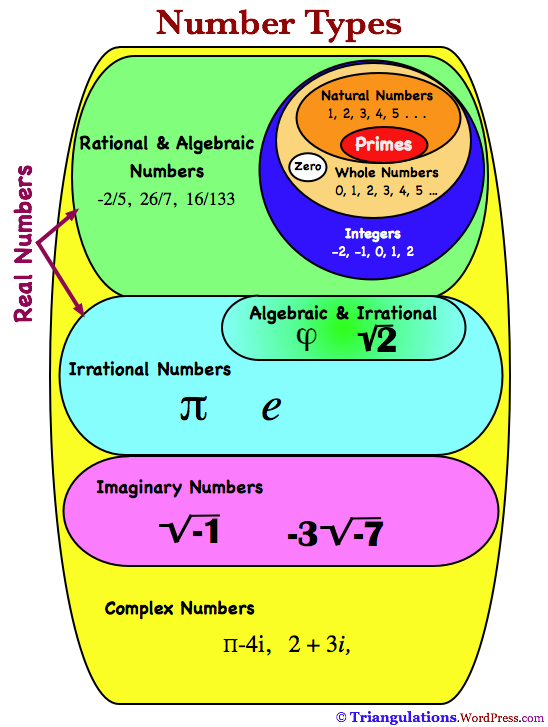
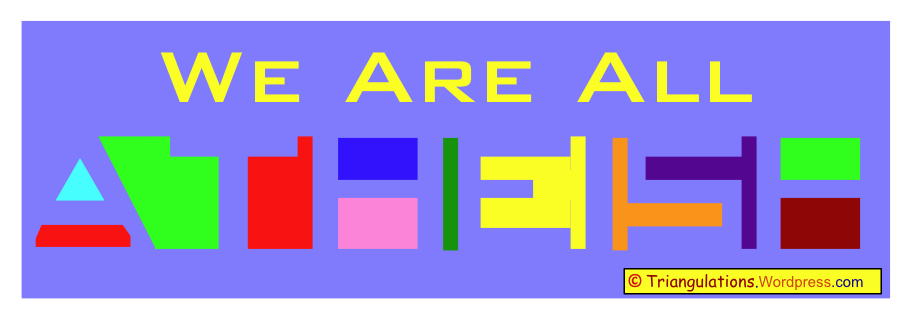

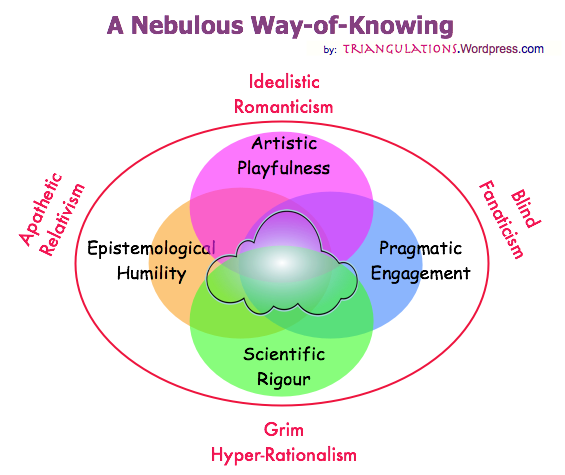






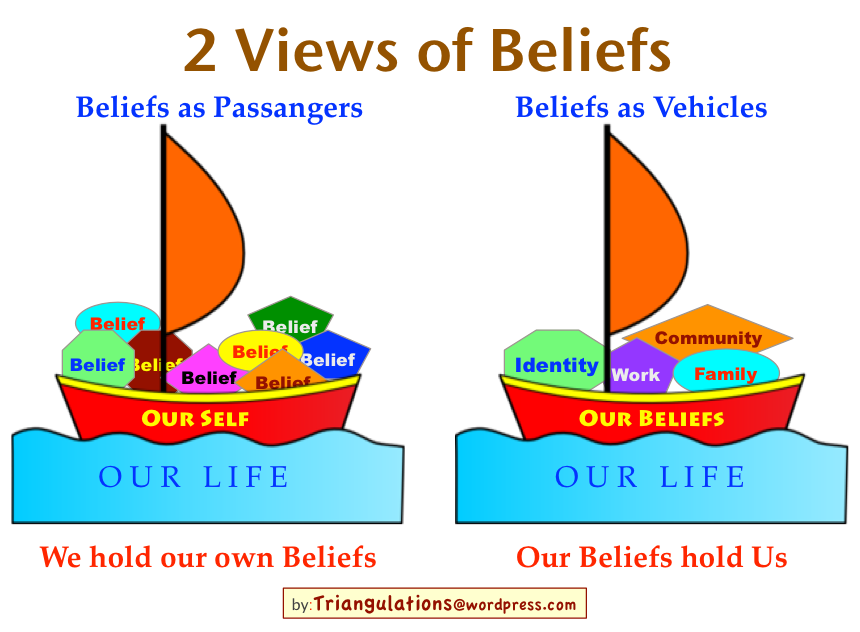







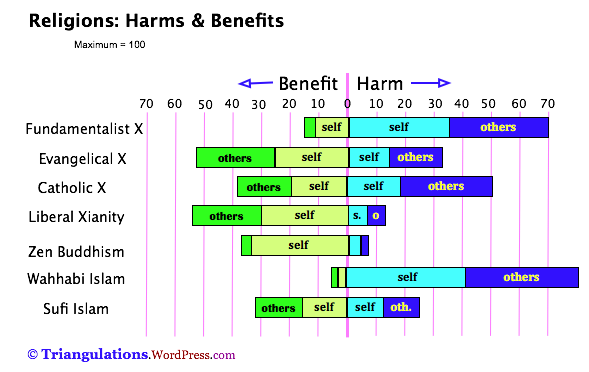



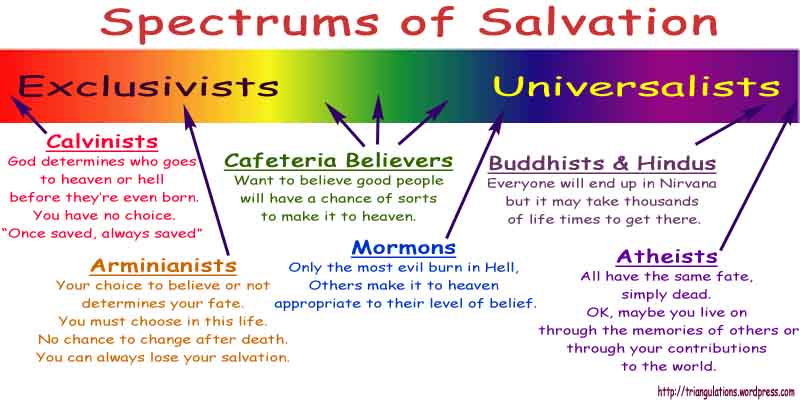




Note: I doubt any reader, except the most devout and nerdy, will get this far. This post is too long, but I built it to help me with an envisioned project of building YouTube presentations of my material in the future. YouTube stuff takes a lot of work, so I keep procrastinating, but I think it may be a better vehicle. And I could imagine cramming 10 posts’ insights and images into a very short YouTube video. So that is a goal. Any of you have similar ambitions?
Ironically it’s the first time I’m starting to understand your boat metaphor. Not because I completely relate, but because you are getting “science-y” (which I *can* relate to) and explaining why the metaphors and models are helpful.
Beliefs are certainly more complex than we pretend them to be in our minds sometimes. For example, I can say that atheism is simply my lack of a belief in a god, but it’s much more than that. And then there’s the whole idea that we can’t just choose to believe something different like changing shoes. It does bother me when atheist bloggers make it sound just that simple.
I have just started reading Thinking Fast And Slow by Kahneman and I think it may be helpful to this discussion. More later though. Boarding a plane. But at least I’m tracking with you again. Whew.
I like the overlapping circles showing Beliefs and Actions. This is the clearest way I’ve ever seen to show that sometimes people act in ways inconsistent with their beliefs.
As usual with symbols and metaphors, it is still oversimplified. One important belief disorder is “conflicting beliefs.” Perhaps our beliefs are very context dependent. The priorities assigned to any belief change based on many factors (who is watching me? what do I have to gain?).
@ MichaelB,
Ah, very good. I’m glad my muddled metaphor has materialized in your mind Michael! 😉
@ Abel,
Well, glad one of them was useful. Thanx. I agree with your in observation too. Dude, do you have a blog yet?
Hello Sabio you are entirely right that many believers and unbelievers use different, conflicting definitions for the same words and this most often leads to very emotional and frustrating debate.
If you define “believing” as “holding that something is true” then “believing without evidence” is psychologically impossible, no one can do this.
However “believińg for dumb reasons” is probably one of the dominant features of human brains.
I personally undderstand “belief” in a religious sense as a basic hope that something is true provided it is highly desirable and has NOT be shown to be widely implausible.
I am trying to foster open and respectful conversations between theists and atheists and I hope not to bother you with my comment, otherwise you can erase it.
Hello Lotharson
Defining the word “belief” here would be most useful. I was assuming enough agreed opinion on the word for this post. I may have to work on the word itself more in the future.
However, I am using the word in it’s general psychological here and not in a religious sense at all — I am not implying “faith” at all.
Though in English, faith and belief overlap in meaning, in German, “Glauben” is pretty much a word which is used for both. If I am not mistaken. Sort of like Blue and Green are close colors in English, while “Ao” is a Japanese word that means both/either.
Do take a stab at the “Question to readers” next time if you’d like.